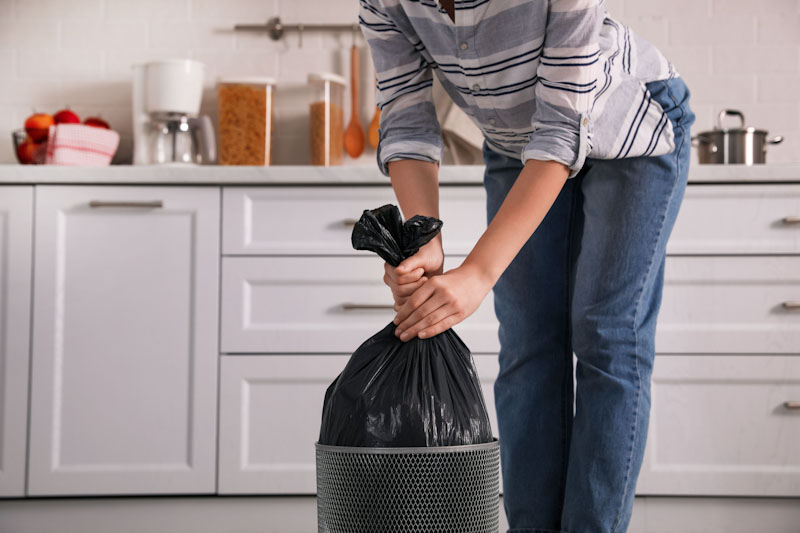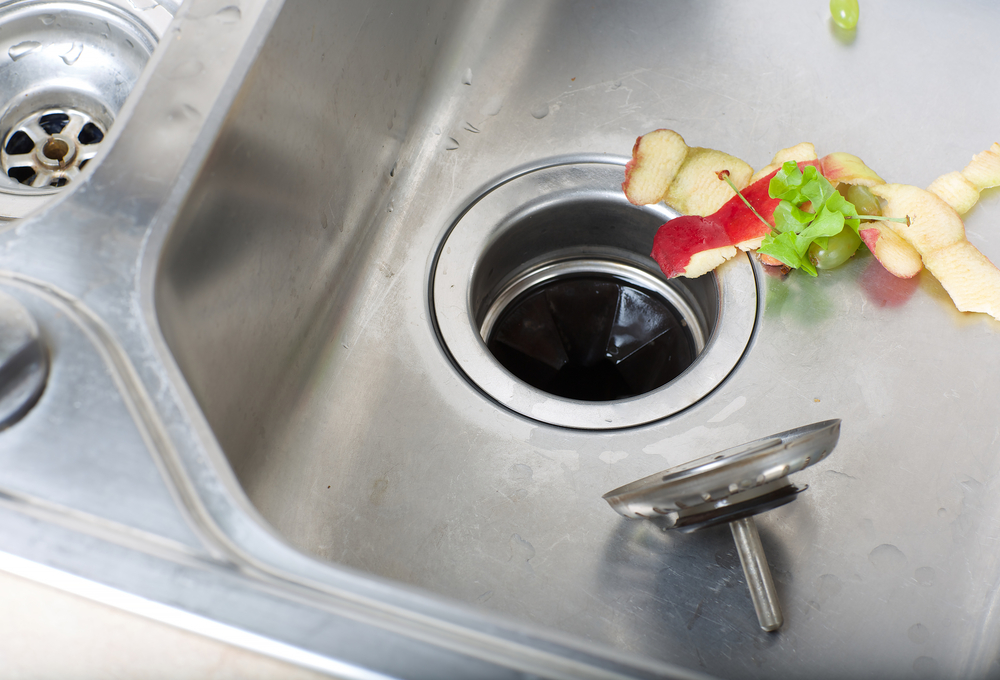The world is already a filthy place, and humans are known for creating a lot of trash and treating nature as their personal garbage can. Luckily, we live in a country where recycling and garbage disposal are not neglected activities like in less developed countries.
Have you wondered what would happen when the sanitation workers stop coming?
There are many reasons for them to stop picking up the trash, and unlike strikes and other union-organized protests, SHTF events are most likely to cause a permanent disruption of this service.
As a result, garbage will pile up quickly, and as days turn into weeks, pests and sanitation issues will become serious problems. This may not look like a pretty picture, but the worst is yet to come as you realize you must deal with waste disposal when no one comes to keep the neighborhood clean.
So, let’s look at how we can deal with waste disposal and what every single one of us can do.
Dealing with organic waste
When discussing the topic of organic waste disposal, there are three major topics we need to address: organic waste produced by humans, feces from humans and animals, and corpses. Like it or not, you will have to deal with feces and corpses if you’ve survived a large-scale disaster.
When dealing with organic waste produced by humans, the main option to dispose of it properly is to turn it into compost, and what’s not compostable should be thrown in the burn pile or made into pig fodder. Pigs will eat all your kitchen scraps, and nothing will go to waste. And the good part is that you will have a good pork supply for hard times.
Feces from herbivores such as cows, horses, sheep, goats, rabbits, and chickens are commonly used in composting. These manures are generally safer to compost because they contain fewer pathogens compared to carnivore or omnivore feces.
Feces from carnivorous animals like cats and dogs, as well as omnivores like pigs, should be avoided in compost piles. Their waste may contain pathogens that are harmful to humans, such as E. coli and Salmonella.
Even human feces can be turned into compost, but the process is a little bit more complex. To find out more about this topic, I recommend reading the “Humanure Handbook” by Joseph Jenkins. It will give you all the information you need to turn human feces into humanure (compost for agricultural purposes).
If turning human feces into compost doesn’t sound too appealing to you, then you can always dig a latrine and get rid of human excrement the old-fashioned way. There are various instructional videos on how to do so and even how to use dry toilets to make your life easier.
Now, the tricky part is dealing with corpses. This is hardly a discussion topic covered by preppers because most folks don’t want to acknowledge that certain disasters may have a grim outcome. After all, seeing piles of bodies in your neighborhood is a shocking experience. Yet, someone will have to dispose of these bodies, and they will need to do it properly to avoid the spread of disease.
Encountering deceased individuals following a significant catastrophe or natural calamity often entails witnessing distressing scenes of bodily damage, accompanied by unsettling fluids, odors, and sounds that may linger in memory. The process of discovering, removing, and interring these remains is inherently messy, particularly in the absence of essential materials to ensure a thorough and sanitary procedure, thus averting potential contamination.
To tackle this daunting task, it’s essential to equip oneself with particulate masks, latex gloves, and ideally, body bags. However, obtaining the latter might pose challenges, leading to the use of large, heavy-duty garbage bags commonly found in the emergency supplies of prepared individuals.
The most practical approach to managing deceased individuals involves establishing temporary burial sites where bodies can be laid to rest. These sites should be located no less than 600 feet away from any potable water source, taking into account factors such as regional water tables, climatic conditions (including the possibility of frozen ground), soil composition (which could hinder manual excavation), and the number of graves needed.
Dealing with non-organic waste
When it comes to non-organic waste, there is only one viable option that will work in the long run: recycle and reuse. By recycling, I’m not referring to sorting the trash, putting it on the curb, and letting the garbage man carry it away. You will be in charge of the recycling process, and once you start separating the trash into piles of similar materials (metal, paper, glass, etc.), you should figure out ways to reuse all the materials you’ve gathered.
Most folks will decide to burn their trash, but this is not a viable alternative in the long run because there’s the risk of accidental wildfires being started, getting injured, or attracting unwanted attention. Those who burn trash on their homestead know that there are certain preparations that need to be made before igniting their junk pile. You also have to read the weather and make sure the fire doesn’t spread.
You can reuse most of everything if you put your imagination to work. For example, paper products can be shredded and mixed with water and cement to create Papercrete, a cheap building material thatis often used in the construction of houses in self-sustainable communities.
If you’re a skilled metalworker, you can make pretty much anything out of scrap metal, from knives to roof shingles. You can make all sorts of tools, or you can melt various metals and sell them (if there’s a market for such resources).
Plastic is a trickier by-product to reuse, and there’s not much you can do with it other than turn it into fibers or melt it into building blocks. In certain third-world countries, bricks are made out of melted plastic and used to build roads or other construction. There are even machines called Pyrolysis Plants (well, more like entire processing systems than a single machine) that can turn plastic into fuel, but as you can imagine, this is not an option available to everyone. However, there are various videos on YouTube showing you how to make your own fuel from plastic using much simpler methods.
Do your own research
One important aspect of waste disposal is figuring out how much waste your household produces and which type is the most predominant one. For a lot of families, food packaging makes most of their trash, and at a national level, more than 63% of solid waste derives from packaging materials.
Once you know how much waste you produce, you will be able to look for ways to get rid of it when the waste management and recycling services stop working. There is a lot of information online covering this topic, and you will be amazed to discover how waste can be transformed into something useful.
Keeping your area clean
By your area, I’m referring to all the locations in which you do most of your activities. Waste management is a dirty job, and you need to make sure everything is disinfected after you’ve done your job. Certain folks will argue that they have stockpiled enough sanitation supplies to last them a lifetime or that these items will still be available to acquire (through various means) after things go south.
That might be true to some extent, but as preppers, we always have to ask ourselves that irritating question, “What if…?” that keeps pushing us forward. What if there aren’t any clean supplies you can buy, steal, scavenge, or whatever? What if you run out of cleaning supplies or your stockpile is compromised?
I’m the type of person who likes to have backup plans in place for everything that I can manage, and I was fortunate enough to travel the world quite a bit and learn how people less fortunate than us deal with their sanitation needs.
First and foremost, I encourage people to learn about soap plants, those plants with a high saponin content that can be used as soap substitutes. There are certain plants that can be found all over this big country, and they have a long history of being used as soap replacements. Even the Native Americans and the first pioneers used these plants to keep their bodies and their homes clean.
Secondly, If you’re not an experienced forager or if this topic seems too difficult for you, how about growing some natural cleaners in your own garden?
If this sounds appealing, you can check this article and learn what plants you can grow and how to use them for your sanitation needs.
Lastly, sanitation should be a group effort if you live in a densely populated area. It’s not your job to clean after others, and everyone should be involved in the cleanup process that follows a SHTF event. If things don’t get back to normal and you see trash piling up everywhere, perhaps it’s time to consider relocation to a cleaner area.
Concluding
Waste management and disposal is a topic that’s hardly being discussed by survival experts because it’s not pretty, and it doesn’t sell. It’s not as glamorous as building stuff, hunting, and other activities that make you feel empowered, but it’s a necessary endeavor. The trash won’t magically disappear, and sometimes you need to get your hands dirty to get things done.











Tom MacGyver | May 22, 2024
|
Kitchen scraps can be an issue because they more than likely contain meat or fats. You DON’T want them on your compost heap due to the smell they give off as they rot. Yeah, you can feed them to pigs, but how many people have pigs these days? Instead, go with “pigs with wings,” otherwise known as chickens! Chickens are cheap to buy, truly easy to keep, and will eat almost ANYTHING. They will FIGHT over things like bad meat, old pizza, and mushy vegetables pulled from the fridge’s “crisper.” It’s a win-win. The chickens get the proteins they crave, and we get a return on investment for all the bad meat and such we give them; MEAT AND EGGS.
KupunaLani | May 23, 2024
|
what I have learned in my own gardening/homesteading adventures: There is a huge difference between ‘hot’ manures that are high in nitrogen, will burn your plants until composted for an average of 6 mos to a year…. store bought composted manures are not likely to be generally available if things get rough…
and ‘cold’ manures that are lower in nitrogen, do not burn plants , and can be put into ‘immediate’ use…which generally are ‘pellet’ manures like from rabbit, sheep, goat, llama, alpaca, deer.. They may be lower in nitrogen, but they also have a wild range of other nutrients.. For example, rabbit manure is high in zinc. You do not need much… be careful not to over fertilize.. not because it will ‘burn’, but because most plants do not need vast quantities of fertilizer and you can quickly go right past ‘beneficial’ to ‘detrimental’… go slow, you can always add more.
‘Free for the removal’ or very low cost horse and cow manures are often in differentiated ‘fresh’ and ‘aged’ piles.. the aged piles are usable much faster. In many areas, local fb, email lists, craigslist, etc frequently have free removal or free for the seasonal you clean out the stable opportunities including the rabbit, sheep, goat, llama, alpaca.. that I frequently took advantage of before I had my own animals. Now I use my own free offerings as an entre into the the local plant and gardening groups.
Seeds are an issue in most herbivores… whether ‘weed’ seeds or mono crop seeds.. ‘First cut’ hay or straw for bedding is usually cut preseed formation. You can also buy ‘certified no seed’ hay and straw… but that may not be a future option.. .
Learn your ‘weeds’.. many are delicious and have higher nutrient values than store bought, even ‘non gmo/organic’… many also have ‘medicinal’ values and/or pull up plant nutrients (dandlions do all 3) that are beneficial to your convenional garden plants… SOME.. such as wide bladed grasses are good feed for rabbits and other animals.. Knowing your growing cycles for your weeds is also useful.. at what stage and what parts are the most beneficial for human or animal food at each stage? or medicinal uses? or easier ‘elimination’? Some can also protect your soil and garden roots as ‘green mulch’.. bitter cress, miners lettuce, purple dead nettle, etc. in my area have varying viability seasons but are great seasonal ground cover besides their other uses…..
Heavy ‘harvesting’ at the proper stages keep most weeds in a manageable range. My particular pet peeve are weeds with ‘foxtail’ or ‘bur’ seeds that torture my dogs. The local ‘foxtail’ seeded grasses are also widebladed. I am currently ‘harvesting’ huge quantities for rabbits (always start slow and build up how much of any ‘new’ plant even if they tolerated and devoured huge quantities ‘last year’)… I harvest them individualy (sickle),. then spend an hour or so ‘zenning’ (great rest spell in the shade at the heat of the day) with a pile of grasses that I go through carefully eliminating any other plants that may be contraindicated or even toxic for rabbit and cutting off the seed heads to either go in the garbage removal or burn barrel. Some of these weed seeds can be viable for up to 30 years in the soil. If I have too many of the cleaned stems and blades, I can always let them dry into my own ‘hay’ for later treats..
The local currently heavy infestation of ‘introduced’/invasive bur chervil I start pulling as soon as I see it.. Note: need to be careful as it looks very similar to Queen Anne’s lace aka edible ‘wild carrot’ (Q.A. has hairy legs and generally one purple’ blossom near the center of a flower cluster when you get to the flower stage.), hemlock (wildly toxic, smooth/hollow stemmed with purple splotches.. wear gloves and take extreme care not to get oils on your skin) and several other pants (storkbill) at various (early) stages. This is the third year I’ve been pulling the bur chervil and I’m seeing a marked lowering of the ‘infestation’. lol.. there hasn’t been much of a dent in the ‘foxtail’ grasses…
One last thought on ‘composting’.. I’m getting way too old to do the lauded enclosed ‘turned’ composting, opting for an open compost pile that chickens go through thoroughly at it’s various stages, either ‘reprocessing’ fresh additions or scratching and turning looking for the insects and worms such piles attract. I do not place any animal ‘leftovers’ in my compost.. less for any smell, but because they tend to attract ‘domestic’ (including my own or ‘neighbor’ dogs) and wild animals regardless of how urban or rural I have lived.. I do feed such and past due fruits to my chickens, but in a separate ‘treat area’ that I can clean up if anything happens to remain once they are finished. I also try to put them out early in the day to give the chickens plenty of time to eliminate them before such as raccoons and even bears in my area show up usually in the evening. You may not have bears in town or city but guarantee you have rats, loose dogs, coyotes, skunks, and raccoons..
Booney | May 30, 2024
|
One more option to brown waste is; if space is available, is setup a Reed bed system.
This can be a major investment in time and labour.
Travelin On | May 30, 2024
|
Seems to me the old fashioned latrine/privy would be the easiest if things for human waste come to disaster time. Maybe some of what is being discussed is for urban areas, I don’t know. I have no solutions for urban areas. For wet/organic plant/food trash all those scraps went into a garbage it Dad dug He’d dig the pit as deep as he could and still get out of with a ladder. Yes, there was a cover with a trap door on it covering the hole when the pit was done to prevent anyone from falling in. After so much garbage went into the pit or it began to smell, a layer of dirt was put in on top of it and then more trash on top of that. The pile of dirt that came out of the hole went right back into the hole as time went by and by the time the garbage going in there got up to within two and a half to three feet of the top of the hole there was only that much of the dirt pile left to put back in the hole and Dad dug a new hole and we started over. He only had to dig a new hole every few years though. All excess paper/cardboard, boxed materials were burned and made great fire starting materials. When it came to putting trash in the garbage can for the trash to pick up it was mostly thin flimsy plastic that went in there. Any plastic that could be reused was. Bread bags from the store became the bread bags used at home for homemade bread and they got used over and over and over. Same with any plastic bag of durability. Things didn’t get thrown away. If we got a stack of an item we couldn’t use we had neighbors who could and our parents traded what we had extra for something someone else had too much of they didn’t need that we could use, but nothing got thrown away into the trash can until it was totally worn out. We didn’t have trash trucks to come around and empty garbage either, we had dumps for a local area and we had to haul our stuff to the dump ourself. The biggest contributor to the dump was the forest service. When they got done with fire season and smoke jumping for the year they put all the pallets of unused MRE’s out at the dump in nice neat piles. The local citizenry cleaned those pallets of MRE’s up in nothing flat, including the wooden pallets the MRE’s came on. In return the citizenry housed the fire fighters for the season when the fire season was active. We had a fire fighter/smoke jumper living with us most summers that I was growing up. The few cans we had that came from the store got both ends cut out of them and they were cut open with a pair of metal shears, flattened out and with a little ingenuity cans of a size could be put together, two or three, depending on the needed use, to make a thick enough sturdiness and secured together for whatever purpose was needed. As an example the entire perimeter of the chicken yard had flattened cans going down into the ground with the chicken wire attached to the top portion of the can to prevent any chance of the chickens digging out under the wire to get loose, or even in their dust bathing habits. Old large cans used for storing oil or other things, or worn out old food grade cans that had been used for storing wheat, flour, sugar, rice, etc., were put down in the ground and filled with concrete to a certain level before a gate post was inserted into it, to help stabilize a new gate post when one was needed. Jars got used over and over and over. What few jars we had that came from a store that couldn’t be reused for canning were used for short term storage in the fridge for leftovers. If things hit the fan today, people would need to get over their finickiness about not wanting to eat leftovers if they want something to eat. When I was growing up and has continued through my life, refusing to eat leftovers meant or means going without food. In our home if we weren’t willing to eat leftovers we went hungry. We ate leftovers and were thankful for something to eat. Giving credit where credit is due, my mother was a superb cook and she could and did dress up leftovers so it was almost like a new meal. That background has been invaluable as an adult for me. I have to leave the urban issue to people with knowledge of how urban people would need to deal with that situation, not having time or experience in such places.